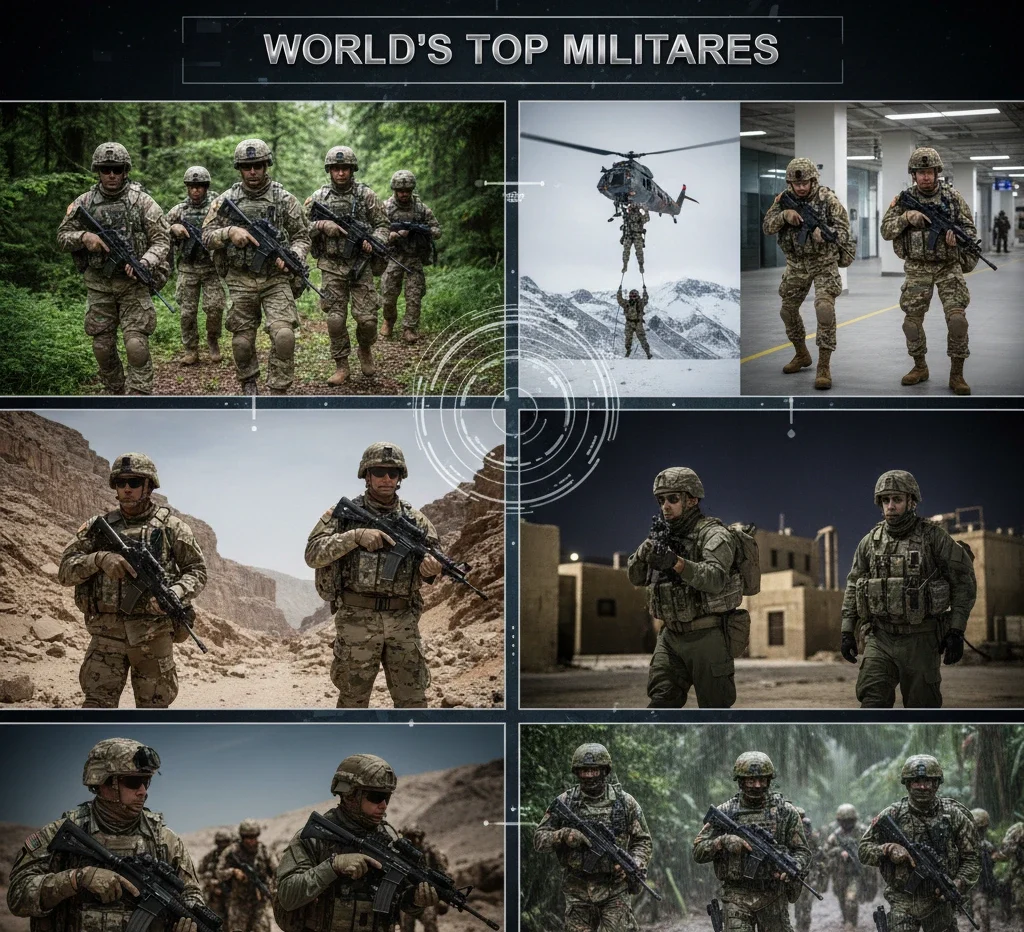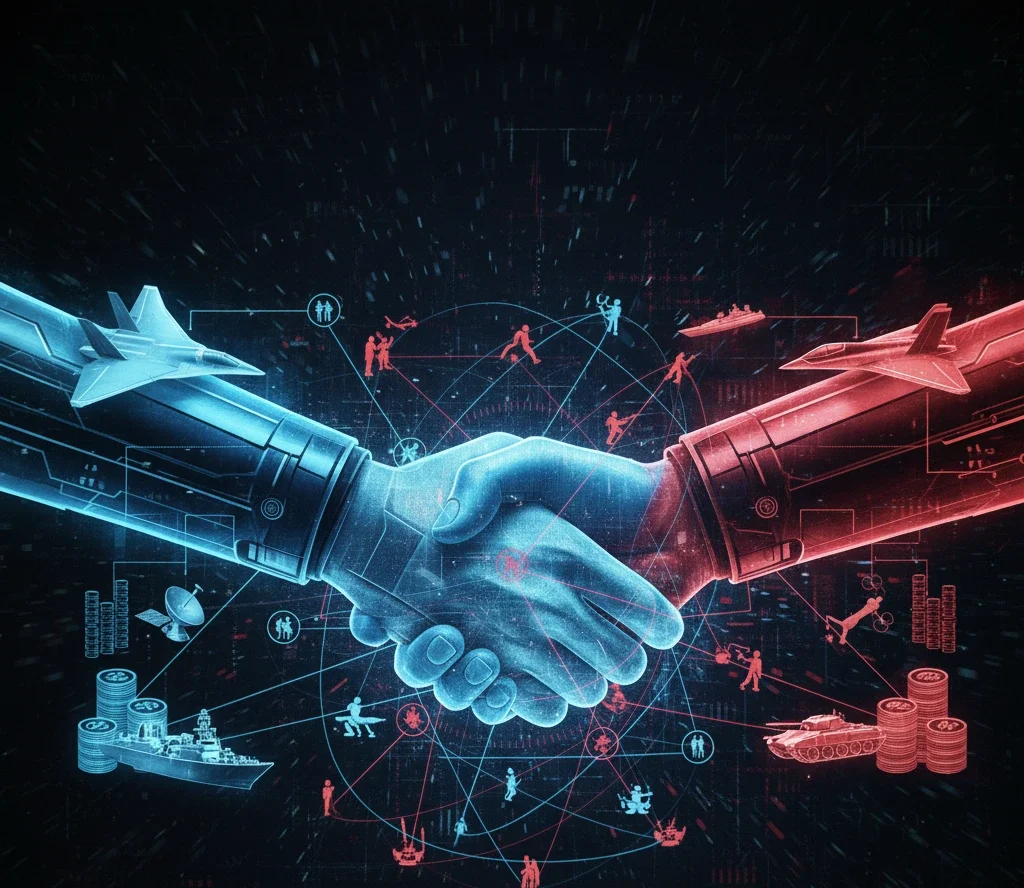When you look at the world in 2025, one thing becomes clear: the global arms race isn’t slowing down; it’s accelerating.
If you’ve ever wondered who’s spending the most on weapons or why military budgets keep rising every year, you’re not alone. Whether you follow geopolitics or are just curious about where countries invest their power, understanding global military spending gives you a deeper look into how nations prepare for an uncertain future.
Let’s break down the data, the motives, and the consequences of this worldwide race for military dominance.
Global Military Spending Reaches a New Peak
According to the Stockholm International Peace Research Institute (SIPRI), total global military expenditure climbed to $2.718 trillion in 2024, marking a 9.4% increase from the previous year, the largest rise since the Cold War.
When you think about it, that means nations are now spending more on defense than ever before in human history. From advanced drones to hypersonic missiles, defense modernization programs are reshaping global security priorities.
The United States alone accounts for $997 billion, nearly 37% of the world’s total spending. China follows with $314 billion, while Russia, India, and Germany round out the top five.
Together, these nations represent more than 60% of worldwide weapons expenditure, and each has its own motivation driving the increase.
The Top 10 Defense Budgets of 2025

Here’s a quick look at how global defense spending stacks up:
| Rank | Country | Defense Budget (USD, 2024–25 est.) | Share of Global Total |
| 1 | United States | $997 billion | 36.7% |
| 2 | China | $314 billion | 11.6% |
| 3 | Russia | $149 billion | 5.5% |
| 4 | Germany | $88.5 billion | 3.3% |
| 5 | India | $86.1 billion | 3.2% |
| 6 | Saudi Arabia | $78.4 billion | 2.9% |
| 7 | United Kingdom | $74.3 billion | 2.7% |
| 8 | Japan | $70.7 billion | 2.6% |
| 9 | France | $69.9 billion | 2.5% |
| 10 | South Korea | $54.2 billion | 2.0% |
When you see these numbers, you realize this isn’t just a matter of weapons, it’s about influence, deterrence, and survival in an unstable world.
Why Nations Keep Increasing Their Defense Budgets
If you’re asking why global arms spending keeps climbing, the answer lies in geopolitical tensions and the rapid evolution of war technology.
The conflict in Ukraine, rising competition in the South China Sea, and renewed military exercises in Europe have all triggered nations to strengthen their defenses.
Defense analysts point out that this new era of competition isn’t about quantity; it’s about technological superiority. Countries are shifting funds toward:
- Artificial intelligence–driven warfare
- Cyber defense programs
- Hypersonic missile research
- Space surveillance and satellite security
- Naval and air force modernization
As military expert Dr. Erik Thorsen from the European Defense Forum notes,
“The modern arms race is no longer just about tanks and troops; it’s about algorithms, automation, and real-time intelligence superiority.”
You can think of it as the world’s biggest investment in staying one step ahead of the next potential threat.
Superpower Military Investments and Rivalries

When you compare the world’s most powerful militaries, the United States and China clearly dominate the global military economy.
The U.S. continues to outspend every nation, maintaining global bases, next-generation aircraft, and naval power across five oceans.
Meanwhile, China’s People’s Liberation Army (PLA) has rapidly expanded its reach with modern aircraft carriers, stealth drones, and the world’s largest standing army.
Russia, despite economic sanctions, continues high defense spending to sustain its operations and upgrade missile systems. India and Germany have also made large leaps, India focusing on border security and regional deterrence, and Germany investing heavily in NATO’s defense posture.
What’s surprising is how middle-income nations like Saudi Arabia, South Korea, and Japan are catching up, proving that defense isn’t limited to superpowers anymore.
The Growth of the Global Defense Industry
Behind these rising budgets is a booming defense industry that’s shaping the 21st-century economy.
If you follow the numbers, global arms production and trade grew by 7.8% in 2024, led by companies like Lockheed Martin, Northrop Grumman, BAE Systems, and China’s NORINCO Group.
The global arms trade is now valued at over $115 billion annually, and countries are competing not just to buy weapons but to sell them.
This fuels both economic growth and political leverage.
For example, Turkey has become one of the fastest-growing exporters of drones, while the U.S. and France dominate high-tech fighter jet contracts.
If you’re wondering why governments keep funding defense innovation, the answer is simple: military technology often drives civilian innovation too, from GPS to the internet itself.
The Hidden Costs: Global Security and Economic Pressure
While defense modernization brings strength, it also creates economic pressure.
Developing countries often face a tough trade-off: spend on education and health, or on weapons and war technology.
According to the World Bank, global defense budgets in 2024 averaged 2.4% of GDP, but in some nations, like Russia and Saudi Arabia, that number exceeded 5%.
This raises important questions for you and me as global citizens: are these investments truly making the world safer, or just more divided?
Security analyst Maria Velasquez writes in her 2025 report for Global Policy Watch,
“The arms race doesn’t always reflect preparation for war; sometimes it reflects fear of falling behind.”
That statement captures the paradox of modern defense spending: nations spend billions to ensure peace, yet that very competition often fuels new rivalries.
Military Power Comparison: More Than Just Numbers
If you compare global military power using the Global Firepower Index, you’ll see how budgets don’t always equal dominance.
For instance, China’s manpower gives it a numerical advantage, but U.S. technology and training offer unmatched precision and coordination.
Similarly, India’s defense investments prioritize troop readiness and border infrastructure, while Japan and South Korea emphasize missile defense and naval technology in response to regional threats.
As a reader, when you look beyond raw spending, you begin to see how military strength is not just about size, it’s about strategy, efficiency, and partnerships.
What the Future Holds for the Global Arms Race
Looking ahead, experts predict global defense spending could surpass $3 trillion by 2027, driven by automation, AI warfare, and space defense programs.
We’re entering a period where satellites, quantum computing, and autonomous drones may decide the balance of power, not just armies on the ground.
If you follow world politics, you’ll notice that superpower rivalry is quietly shaping everything from trade routes to cyber policy.
For nations, the race is about staying ready; for civilians, it’s about understanding how defense spending influences global peace and stability.
What You Should Take Away
If there’s one thing you can learn from studying the global arms race, it’s that military power and politics are deeply connected.
When you read about billion-dollar defense budgets, you’re not just seeing numbers; you’re seeing how nations prioritize safety, fear, and influence.
As global citizens, we can’t control defense policies, but we can stay informed. The more you understand about military investments and global security trends, the more clearly you’ll see the connections between power, economics, and peace.
FAQs
1. Which country has the largest military budget in 2025?
The United States leads with a defense budget of about $997 billion, accounting for nearly 37% of global military spending.
2. How much is global military spending in 2025?
Global military expenditure reached roughly $2.7 trillion, the highest ever recorded, driven by rising geopolitical tensions and modernization programs.
3. Why are countries increasing defense budgets?
Nations are investing more due to regional conflicts, superpower rivalries, and rapid advancements in war technology such as AI and hypersonic weapons.
4. Which countries are in the top five for defense spending?
The U.S., China, Russia, Germany, and India are the top five, together accounting for over 60% of total worldwide weapons expenditure.
5. What impact does the arms race have on global security?
While it strengthens national defense, it also fuels competition and economic strain, raising concerns about long-term global stability.












